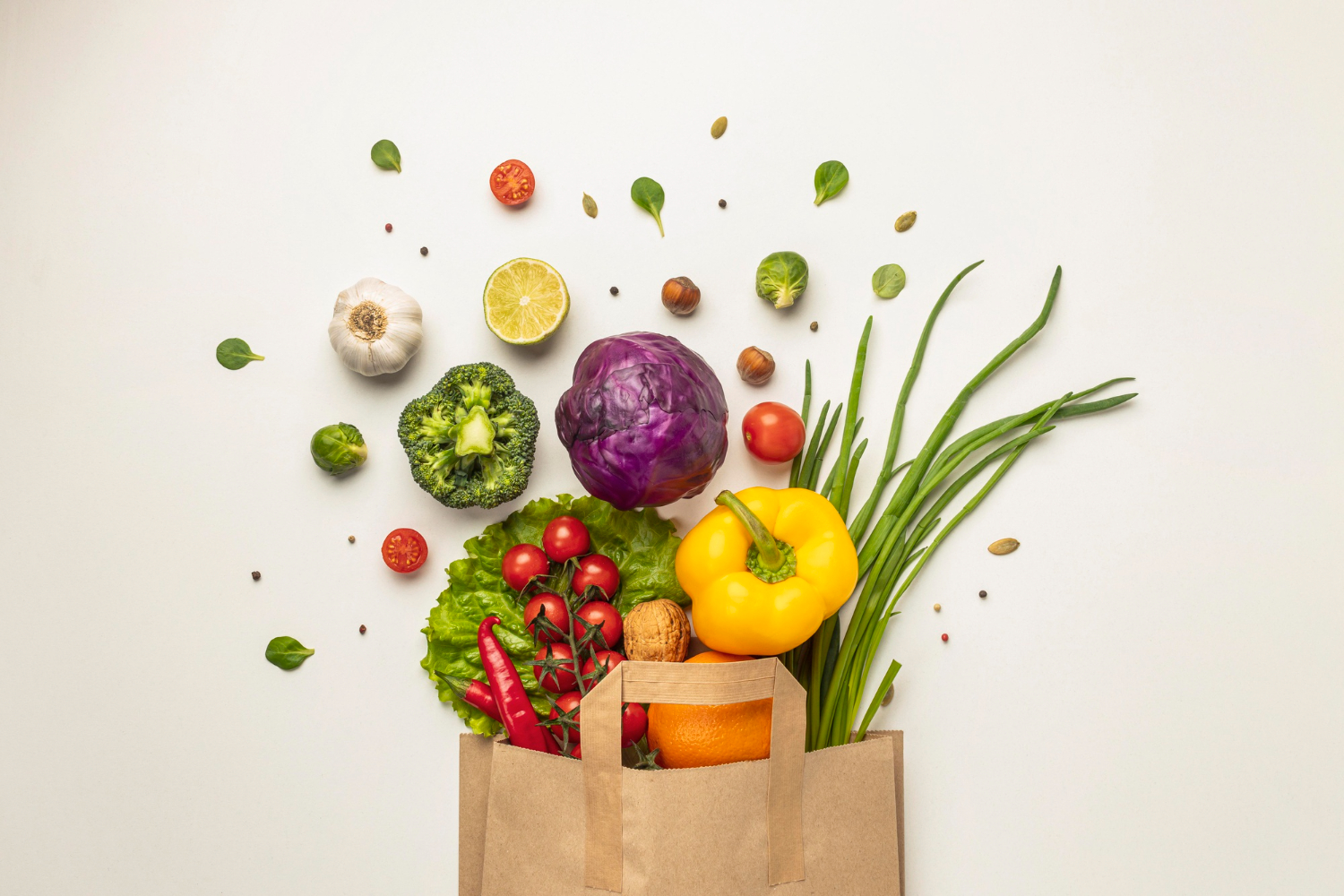Why should we eat vegetables?
We must eat vegetables to make sure we have a balanced and healthy diet. They are packed with minerals, vitamins and fibre. It provides a variety of benefits for our health
- Nutrients: Vegetables have a low-calorie count and height. Nutrient counts, such as vitamins, minerals and fibre.
- Disease Prevention: Eating a lot of vegetables can reduce the risk of diseases. For instance heart disease, stroke, diabetes and even certain types of cancer.
- Digestive Health: Vegetables which have a lot of fibre, can help your digestive system to be healthy and prevent constipation.
- Weight Management: Vegetables are low in calories. That is why it makes them an excellent addition to a diet for losing weight.
- Improved Skin Health: Vegetables contain antioxidants that can help protect your skin from damage caused by environmental factors.
It is essential to eat a variety of colourful vegetables in your diet. This can help enhance health and well-being.
Vegetable names for kids and the benefit of eating them
There are many types of vegetables. Some of the vegetable names for kids to learn about are:- Root Vegetables: These are vegetables that grow underground. Radish, carrots, beets, turnips, and sweet potatoes.
- Leafy Greens: These are vegetables with leafy parts that we eat. Here is the vegetable name list of different types of leafy vegetables. spinach, lettuce, kale, mustard green.
- Allium Vegetables: Onions, garlic, leeks and shallots have a strong flavour and most kids do not like these flavours.
- Cucurbit Vegetables: A few vegetable name lists that belong in this family are cucumbers, zucchinis, pumpkins, gourds, and melons.
- Nightshade Vegetables: They include vegetables like tomatoes, eggplants, peppers, and potatoes.
- Legumes: These are vegetables that belong to the Fabaceae family and the vegetable name list includes beans, peas, lentils, and chickpeas.
Vegetable names for kids that they should eat or be served during their meals
Below is the list of types of vegetables with names that allow children for better nutrition and minerals.
- Carrots: Carrots are rich in Vitamin A, which is important for good vision, and also contain fibre, potassium. They are sweet in taste and can be had raw as a snack, cooked or consumed in soup form.
- Broccoli: Broccoli is rich in Vitamin C, fibre, and calcium, which are essential for growing kids. It has an insignificant taste and can be eaten steamed or roasted or added to soups.
- Spinach: Spinach is a vegetable that is essentially high in iron, calcium, Vitamin A and C. It can be served as it is in salads, or cooked as quiches, lasagne as well as in soups.
- Bell Peppers: Bell peppers are a great source of Vitamin C, fibre and antioxidants. They are important for growth and development. They come in colours of red, yellow, green and can be consumed raw, or even cooked in soups.
- Sweet Potatoes: Sweet potatoes have plenty of fibre, potassium and Vitamin A, essential for our body. They have a sweet taste that kids usually enjoy. They can be eaten baked, roasted, mashed, or even made into fries.
It is important that children consume many different colourful vegetables, as it provides them with many types of vitamins and minerals required for their development. It can also help them develop a keen taste for healthy foods earlier on in their life.
Favourite types of vegetables for kids and how they can be served
- Carrots: Carrots are mostly a favourite among children because they are sweet in taste and crunchy in texture. They can be served raw as a snack, sliced into sticks and served with a dip, or grated into salads. Cooked carrots can be roasted with some honey or maple syrup for extra sweetness, or boiled and mashed with a little butter.
- Sweet Corn: Sweet corn is another vegetable that children often enjoy due to its sweet taste. It can be served as corn on the cob, or shelled and then put into salads, or soups. Corn can also be grilled or roasted with a little butter and seasoning for added flavour.
- Peas: Peas are tiny, round and sweet. It can be served as a snack, added to salads or cooked in a variety of dishes. Peas can also be blended into soups or mashed and mixed with potatoes.
- Cherry Tomatoes: Cherry tomatoes are tiny and sweet and can be served raw as a snack. It can also be added to salads or skewered and grilled or roasted with a little seasoning. They can also be used to make a simple delicious tomato sauce for pasta.
- Bell Peppers: Bell peppers come in a variety of colours and have a sweet taste that kids often enjoy. Bell Peppers can be served raw, sliced, or cooked in stir-fries, or even soups. They are even delicious when added to sandwiches.
Also Read: 10 Tips to Get Kids to Eat Vegetables
Snack box ideas for children
Snack time is an important part of a child’s daily routine. It helps maintain high energy levels and provides essential nutrients for growth and development. Here are some healthy and fun snack box ideas for children:
- Fruit kebabs: Cut up a variety of colourful fruits and skewer them onto wooden skewers for a fun and nutritious snack
Conclusion
Learning about the names of vegetables for kids is an important part of their vocabulary development.
At Euroschool we believe parents should serve vegetables in a variety of ways to help children develop a taste for healthy foods. It’s also important to involve children in the preparation and cooking of vegetables to encourage them to try new foods and make mealtime more enjoyable. Children can also make their own vegetable name list and find out their nutrient values.
. - Cheese and crackers: Pack whole grain crackers with sliced cheese for a protein-packed snack that will keep kids feeling full.
- Vegetable sticks with dip: Pack carrot sticks, celery sticks, and sliced bell peppers with a side of hummus or ranch dip for a nutritious snack that kids will love.
- Trail mix: Combine a variety of nuts, seeds, and dried fruit for a delicious and portable snack that provides healthy fats and protein.
- Yoghurt parfait: Layer vanilla Greek yoghurt with sliced strawberries, blueberries, and granola for a delicious and nutritious snack that is packed with protein and fibre.
- Hard-boiled eggs: Hard-boiled eggs are a fantastic source of protein and can be an easy snack for kids to eat while on the move.
- Apple slices with almond butter: Slice up apples and pack them with a side of almond butter for a healthy and satisfying snack.
Remember to make the snack boxes colourful and visually appealing to make them more enticing for kids to eat.
Conclusion
Learning about the names of vegetables for kids is an important part of their vocabulary development.
At Euroschool we believe parents should serve vegetables in a variety of ways to help children develop a taste for healthy foods. It’s also important to involve children in the preparation and cooking of vegetables to encourage them to try new foods and make mealtime more enjoyable. Children can also make their own vegetable name list and find out their nutrient values.










